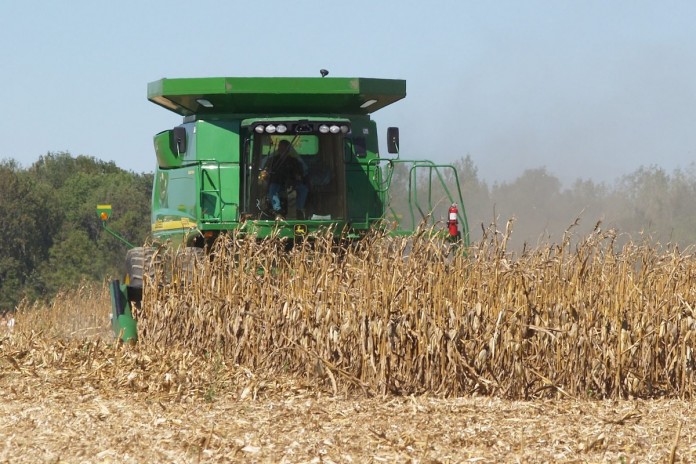K-State and Purdue specialists conducted a global review of corn research over 100 years.
MANHATTAN, Kan. — It takes more than high nitrogen uptake for corn to realize its maximum yield potential. Nitrogen, potassium and phosphorus uptake needs to be in the proper ratio.
This is one of the main findings of a comprehensive review of corn research in the U.S. and worldwide over the past 100 years by cropping systems specialists, Ignacio Ciampitti of Kansas State University, and Tony Vyn of Purdue University.
Ratios
“The highest corn yields, if there are no other limiting factors, are when nitrogen and potassium uptake is in a 1-to-1 ratio and nitrogen and phosphorus uptake is in a 5-to-1 ratio,” Ciampitti said. “Having the right nutrient balance within the plants is more important to increasing yields than just applying extra nitrogen.”
Those nutrient uptake ratios are measured in aboveground portions of the corn plant soon after physiological maturity is reached, he added.The ratios will be different at other stages of growth. Corn takes up a higher percentage of its potassium (K) earlier in its life than nitrogen (N).
By the flowering stage of development, corn has absorbed about 80 to 90 percent of its total seasonal K amount, but only 50 to 60 percent of its total seasonal N uptake, Ciampitti said.
As a result, as the season progresses, the N:K ratio in the plant gradually gets larger. At maturity, high-yielding corn has a ratio of about 1-to-1. Similarly, the nitrogen:phosphorus (P) ratio within the plant changes as the season progresses — but in the opposite direction. P accumulation is greatest later in the season.
“Corn plants eventually accumulate most of their phosphorus in the kernels, and the proportionately later phosphorus uptake means that the nitrogen:phosphorus ratio declines as the season progresses,” Vyn said. “Changes in this ratio are related more to plant phosphorus changes than to changes in plant nitrogen.”
Although the yield level of corn is not strictly related to the N:P balance, in high-yield-potential corn systems, the best ratio in corn plants at physiological maturity was a ratio near 5-to-1, Ciampitti said.
Optimal nutrient ratios were found to be comparable between the U.S. and the rest of the world, and across the decades of corn hybrid improvement, the research review showed. In general, high-yielding corn systems require better nutrient balance and more nutrients, Ciampitti and Vyn said.
If fertilizer application adjustments are needed for corn production in the subsequent growing season to reach optimal N:K and N:P ratios based on a plant analysis done shortly after physiological maturity in the current season, these adjustments should be based on: (1) soil test data, (2) a consideration of potential soil nutrient supply from organic sources in the soil, and (3) expected yield and crop nutrient removal rates, Ciampitti said.
As important as nutrient balance is, the specialists found other factors important to achieving corn’s maximum yield potential.
“Yield improvement, both in the U.S. and worldwide, can’t be attributed solely to changes in nutrient application. It also reflects the combined effects of other production practices, such as water management, seeding rates, timeliness of field operations, insect and disease control, weed control, and more,” Ciampitti said.
Focusing solely on nutrient applications as the means of increasing corn yields will not always help producers close the gap between potential and actual yields, he said. There needs to be an integrated approach to corn yield improvement, including genetics and management.
Factors
“For example, we found one of the main factors contributing to continued corn yield gains in the U.S. was related to genetic improvements such as reduction in barrenness, more erect leaf angles, better flowering-silking synchrony, longer leaf stay green, better tolerance to pests and drought, and better tolerance to crowding,” Ciampitti said.
Another main factor is management, such as better fertilizer application methods and timing, pest control, earlier planting dates, reduced tillage systems, and water management, he added.
An integrated approach to improving corn yields is the most effective, he said, and key nutrient ratios should be monitored and managed for proper balance and optimal yields.










